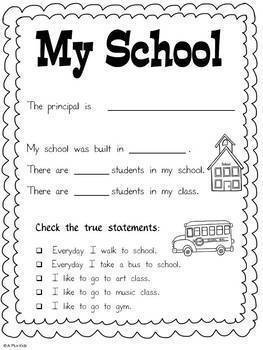

Hold back those tears till you’re out of sight.Īlso, be sure you or your designated caregiver picks your child up at the time you said and at the exact spot you prearranged. Your child takes cues from you, so stay calm and show confidence in them. On the flip side, don’t sneak away, either. Offering a simple and matter-of-fact “See you soon!” and then leaving is a better approach than a long-drawn out farewell. Don’t draw out the goodbye-doing so increases anxiety. You might point toward an activity your child enjoys-like a puzzle or blocks-or suggest that they go to the sandbox or meet up with an acquaintance near the water fountain. So, offer your child “first thing” suggestions. Point to a “first thing.” Not knowing what to do or where to go upon arriving at a new scene increases anxiety.Here are a few things to help make goodbyes less stressful: The key is to establish a consistent pattern of saying goodbye so your child knows what ritual to expect and that they will make it through the time apart, and understands that you really will return. Establish a Goodbye RitualĪ child’s anxiety increases if you make too big of a deal about leaving or draw out the goodbye. Here are a few good transition books that may help: The Kissing Handby Audrey Penn, First Day Jitters by Julie Danneberg, The Night Before Kindergarten and The Night Before First Grade by Natasha Wing, and Miss Bindergarten Gets Ready for Kindergartenby Joseph Slate. You might also read a book to help your child share their feelings and learn that others have similar fears. Worry: “I’ll get lost.” Solution: Practice walking to the room before school starts.Worry: “I’ll have an accident.” Solution: Promise to show your child the kindergarten bathroom and pack a change of clothes in their backpack.Find out if the school has practice bus rides.

#The memories kindergarten 2 how to#
Role-play common social scenarios your child will encounter at school, like how to meet someone, start up a conversation, ask if they can play in a game, or ask a teacher for help. Ask parents or coaches in the area if they know a kindergarten-aged child who will be attending the school. Knowing a classmate can minimize first day jitters, so if possible, help your child meet a peer before school starts. Many schools also now have websites that give online tours that show the school layout. A few days before the big sendoff, take your child for a school tour to help find key places like the classroom, playground, school office, and water fountain. Here are other ways to help your child feel more secure about starting school:

You can also tuck a small square of their security blanket into their backpack or jacket to offer reassurance.īoosting your child’s comfort with school helps reduce jitters, but don’t overhype the new situation with comments like “What a gorgeous class!” or “You’re going to be soooooo happy here!” These types of comments do not ease jitters-in fact, they can cause more anxiety by building up false expectations that don’t pan out. Give your child a special memento like a pebble or a keychain with your photo to keep, and explain that whenever it’s touched, it means you’re thinking about them. Mommy will come back,” when they’re feeling anxious. For instance, have your child practice saying, “Go away, worry, leave me alone. Help your child feel in charge of the worry by teaching a self-reassurance phrase. Research shows that when kids feel they have some control over their situation and can talk back to the fear, their anxiety decreases. Then tell them you’ll be using that same goodbye at every drop-off. Practice a special, private goodbye just between the two of you-like a secret handshake or special kiss-to help your child start to pull away.


 0 kommentar(er)
0 kommentar(er)
